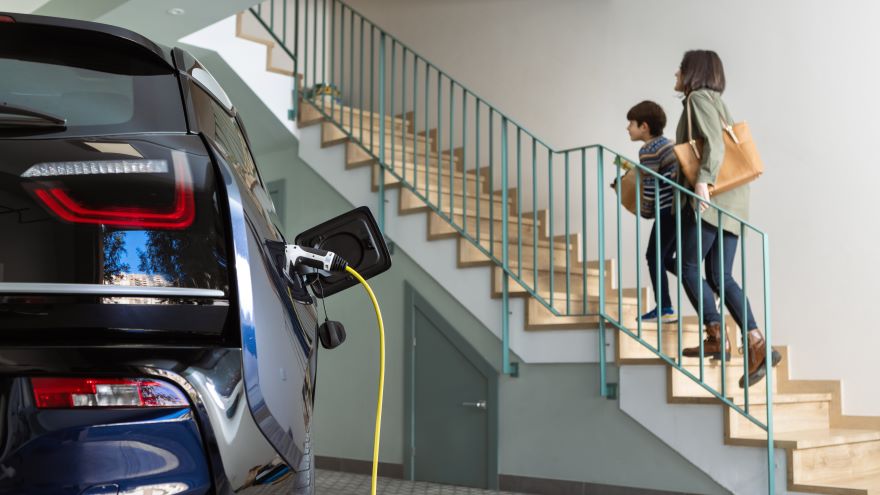J.D. Power study shows satisfaction rising for EV home charging experience

While electric vehicle owners are becoming increasingly dissatisfied with public charging infrastructure, the home charging experience is showing marked improvement, according to the latest study from J.D. Power.
J.D. Power’s 2024 U.S. Electric Vehicle Experience Home Charging Study found the customer satisfaction score for all three home charging segments were up from last year’s study, led by a significant rise of 20 points on a 1,000-point scale for Level 1 portable chargers.
Satisfaction for Level 2 permanently mounted home chargers was up four points year-over-year, Level 2 portable charging stations climbed two points.
Level 1 portable chargers operate through a standard 120-volt electrical outlet, Level 2 portable chargers offer faster charging through a 240-volt outlet and Level 2 permanent stations use a wall-mounted 240-volt outlet.
“In contrast to public charging, home charging is the ultimate convenience for owners to charge their EV,” said Brent Gruber, executive director of J.D. Power’s EV practice. “Home charging is the most satisfying aspect of owning an EV, which is why all parties in the EV ecosystem need to take the necessary steps to ensure residential charging is available for current and potential EV owners alike.”
Gruber said incentives and programs are available to offset the costs of charger installations and upgrades, as well as helping manage ongoing charging expenses.
“But too few EV shoppers are taking advantage of those offerings,” he said. “The industry needs to do a much better job with consumer education and awareness, and dealers are certainly in the best position to fill that role at a local level.”
While satisfaction of Level 1 chargers rose dramatically this year, J.D. Power noted there is still a large gap between that segment’s overall score of 581 and that of the Level 2 segments — 735 for Level 2 portable and 744 for Level 2 permanent.
Charging speed is the biggest reason for that difference, the study found. Level 1 chargers have by far the lowest satisfaction score for charging speed at 325, more than 300 points less than Level 2 portable (649) and Level 2 permanent (682).
The study showed Tesla ranks highest among Level 2 permanently mounted charging stations for a fourth consecutive year with a score of 790, followed by Emporia (764) and GRIZZL-E (761).
Other findings include:
EVs have more problems: While satisfaction was up in all three segments, problems per 100 chargers (PP100) were also up in all three year-over-year. Owners of Level 2 portable chargers issues rose by 6.6 PP100 on average, with internet or wi-fi connection issues cited most. Slower than normal charging speed was the most common problem with Level 1 portable chargers, which increased by 8.6 PP100.
Bidirectional charging: Bidirectional charging allows an EV to send energy for use by other devices in the home, or to potentially be returned to the grid to offset consumer energy costs and help balance peak electrical demands. The study showed 35% of owners of premium EVs and 29% of mass market EV owners said they are interested and willing to pay extra for that feature.
Awareness of utility programs: Nearly half (49%) of EV owners said they are unaware of programs offered by their electric utility and 18% say their electric utility does not offer any programs. J.D. Power said educating owners about local utility programs increases customer satisfaction, which benefits automakers and home charger manufacturers. Satisfaction is 18 points higher for cost of charging 15 points higher for fairness of retail price among Level 2 charger owners who use financial incentives for installation, than among those who don’t use incentives.
The U.S. Electric Vehicle Experience Home Charging Study was conducted in collaboration with EV research firm PlugShare, based on a survey of 15,617 owners of 2018-2024 model year battery electric and plug-in hybrid vehicles from December 2023 through February 2024.
Satisfaction is measured in eight areas: fairness of retail price, cord length, size of charger, ease of winding/storing cable, cost of charging, charging speed, ease of use and reliability.


